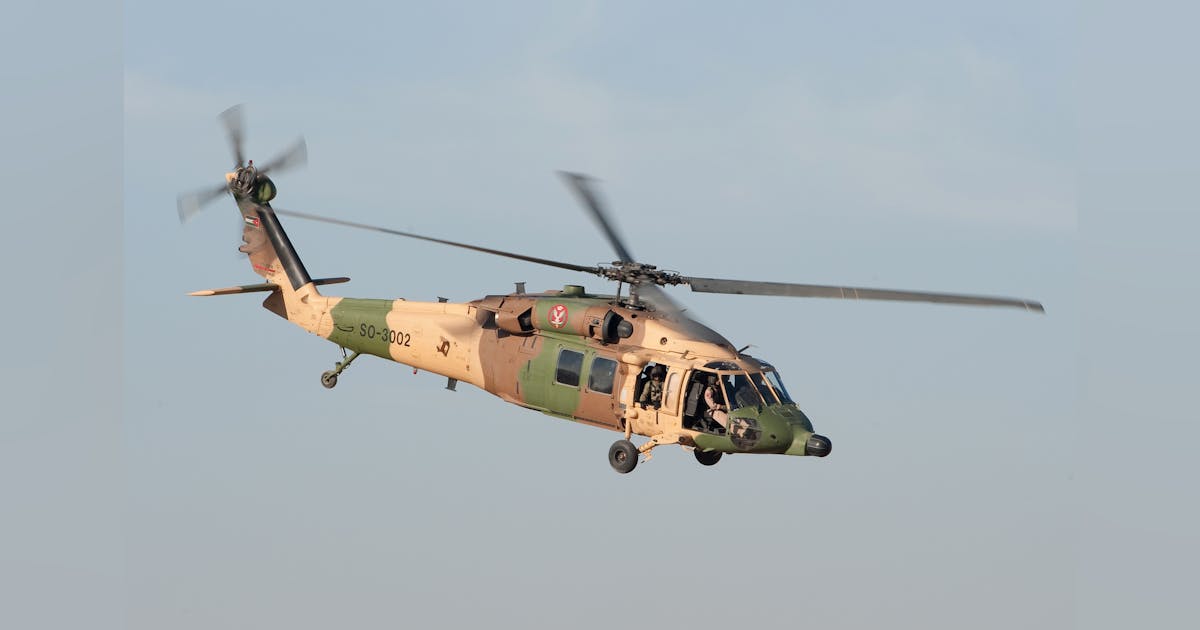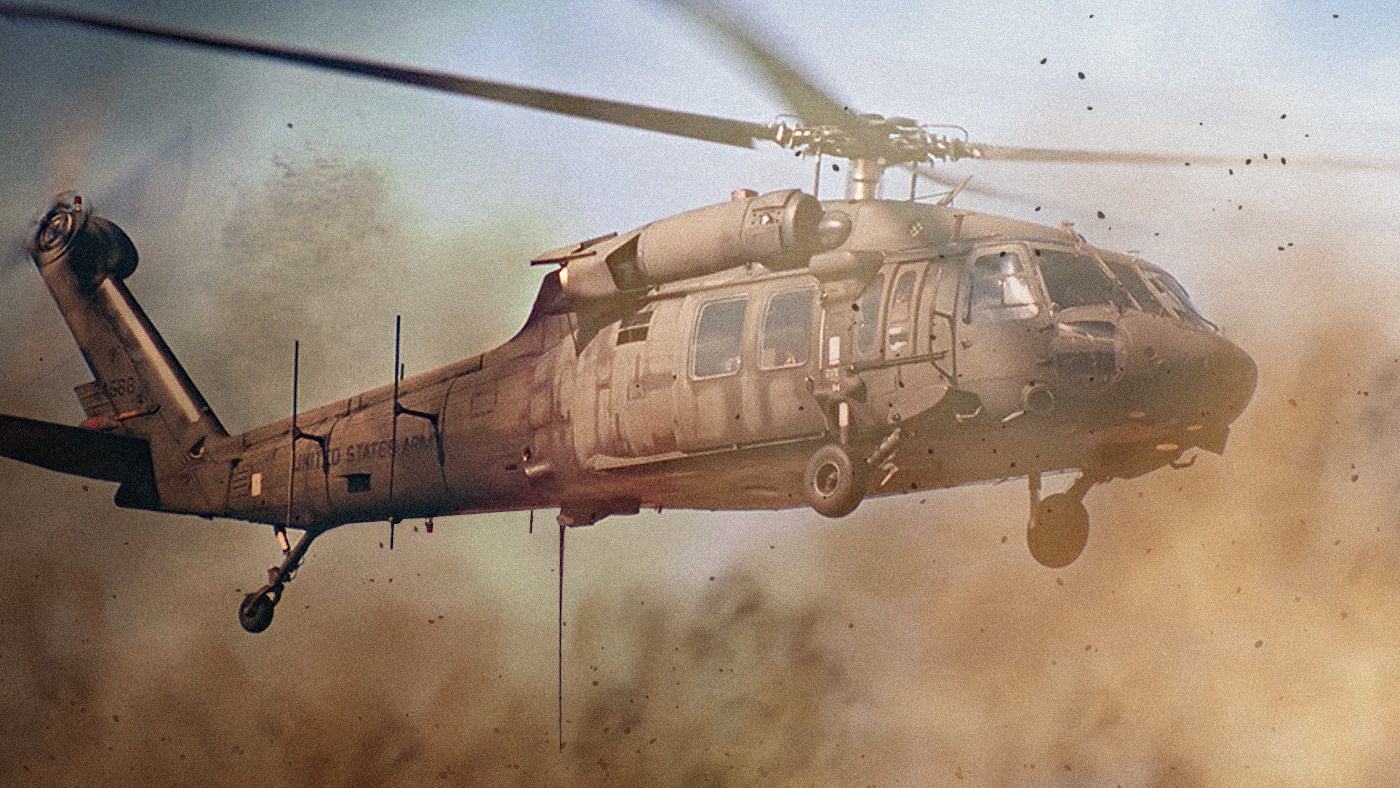The Power Within: Uh-60 Engine Optimization Methods for Peak Performance
The Power Within: Uh-60 Engine Optimization Methods for Peak Performance
Blog Article
The UH-60 Helicopter: Navigating Through Its History, Style, and Considerable Duty in Aviation
The UH-60 helicopter, often described as the Black Hawk, stands as a testimony to the developments in air travel modern technology and its indisputable influence on both armed forces and civilian procedures. From its simple beginnings to its current condition as an icon of integrity and flexibility, the development of the UH-60 has been noted by continual advancement and adjustment to meet the developing demands of the aeronautics sector. As we look into its history, layout intricacies, and the important duty it plays in different industries, a deeper appreciation for this legendary helicopter emerges, clarifying the substantial payments it has made to the realm of aeronautics.
Development of the UH-60 Helicopter

The development of the UH-60 helicopter can be traced back to the demand for a reliable and flexible utility airplane that can satisfy the requiring requirements of modern armed forces procedures. Developed by Sikorsky Aircraft, the UH-60 Black Hawk first took trip in 1974, with the united state Military becoming its key driver. Over the years, the UH-60 has actually gone through numerous upgrades and versions to boost its capacities and efficiency.

Layout Advancements and Attributes

Additionally, the UH-60 includes an innovative avionics collection that includes innovative navigating systems, communication devices, and electronic display screens. These technological improvements boost situational awareness for the crew, improving overall objective performance and safety. The helicopter's spacious cabin design helps with fast and very easy loading and dumping of soldiers, devices, and casualties, making it a functional property for armed forces procedures and catastrophe relief initiatives.
In addition, the incorporation of composite products in essential structural components reduces weight while keeping toughness, increasing the UH-60's performance and gas efficiency. The UH-60 helicopter's cutting-edge design elements collectively add to its reputation as a extremely capable and trustworthy aircraft in both armed forces and civilian aviation sectors.
Noncombatant and military Applications
With functional capacities matched for a range of functional requirements, the UH-60 helicopter serves both civilian and armed forces sectors efficiently. The UH-60's advanced avionics, protective systems, and adaptability have actually strengthened its setting as a keystone of armed forces helicopter fleets.
In the civilian industry, the UH-60 serves a plethora of functions, including firefighting, legislation enforcement, emergency situation clinical solutions, and business transportation. Its reliability, additional info maneuverability, and sizable cabin make it a prominent choice for utility objectives. Furthermore, the UH-60's flexibility for VIP transport and overseas operations further highlight its significance in noncombatant applications. Whether in army or civilian use, the UH-60 helicopter proceeds to prove its worth as a versatile and important aerial platform.
Impact on Air Travel Procedures
Having developed its value in military and private applications, the UH-60 helicopter's effect additional hints on aviation operations expands past its functional abilities to influence a broad variety of airborne objectives. In armed forces setups, the UH-60 plays a crucial duty in army rescue, transportation and search procedures, clinical discharge, and special operations sustain. Its ability to swiftly navigate varied surfaces and damaging weather problems makes it a valuable property in making certain objective success and personnel security. The UH-60's adaptability allows for fast deployment and extraction of soldiers in fight areas, enhancing functional efficiency and agility.
In noncombatant operations, the UH-60 serves different important features, such as firefighting, police support, calamity relief efforts, and aerial studies. uh-60. Its adaptability allows fast responses to emergencies and natural disasters, helping in saving lives and shielding communities. In addition, the UH-60's integrity and endurance make it a favored selection for utility missions, consisting of transportation of freight and employees to remote locations. In general, the UH-60 helicopter significantly affects aviation operations by giving unrivaled capacities and assistance across a broad range of goals.
Future Advancements and Prospects
The development of the UH-60 helicopter is poised to change air travel capabilities you can try this out and reshape operational standards in the coming years. Advancements in modern technology and layout are driving the advancement of next-generation UH-60 versions that assure enhanced rate, agility, and goal adaptability. One key area of focus for future UH-60 designs is improving autonomous capabilities to enhance functional efficiency and safety and security. By incorporating advanced autonomous flight systems, the UH-60 can lower pilot work, allow intricate goals in challenging atmospheres, and boost total goal efficiency.
Additionally, there is an expanding emphasis on sustainability and fuel efficiency in the layout of future UH-60 helicopters (uh-60). Suppliers are checking out new products, propulsion systems, and aerodynamic improvements to lower environmental influence and operating expenses. These innovations not only benefit the environment but also contribute to the long-term feasibility and competitiveness of the UH-60 in the swiftly progressing aeronautics market
Verdict

The UH-60 helicopter, frequently referred to as the Black Hawk, stands as a testimony to the improvements in aeronautics modern technology and its obvious impact on both noncombatant and military procedures.Having actually developed its relevance in noncombatant and military applications, the UH-60 helicopter's influence on aviation procedures prolongs past its versatile capabilities to affect a wide range of aerial goals. Generally, the UH-60 helicopter dramatically influences aeronautics procedures by providing unequaled abilities and assistance across a wide range of missions.
The advancement of the UH-60 helicopter is poised to change aviation abilities and reshape functional standards in the coming years. As modern technology continues to advance, the future developments and prospects for the UH-60 helicopter stay appealing, ensuring its continued relevance in the field of aviation.
Report this page